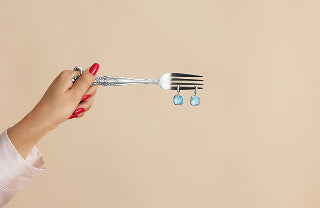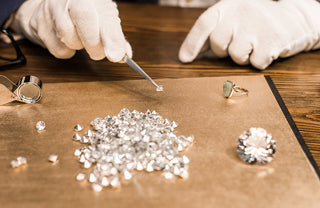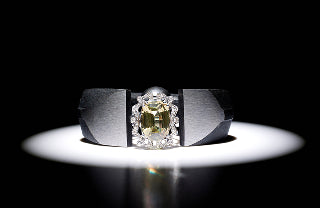Unul din cei 4 C( Color – Culoarea)
Share
In this next chapter, we continue with the second of the Four C s, diamond color. If you haven t read the first of the Four C s, diamond cut, you can read it here (link).
Most people think diamonds are colorless but they come in every color of the rainbow. The diamond industry distinguishes between fancy colored diamonds, diamonds in the normal color range and colorless diamonds. We have a separate article about fancy colored diamonds where we explore their unique characteritics. Learn more about this here(link).
Understanding what diamond color means healp you in choosing the right diamond for you. Diamond is the only gem in which the less color it possesses, the higher its value.This is duet o the rarity of colorless(white) diamonds. A totally colorless diamond alows light to pass through and be transformed into the magneficent rainbow of colors known as fire.Diamonds in the normal color range are graded by how closely they achive absolute colorlessness.
Color grade terminology
In the late 50 s the GIA developed a color grading system using a letter of the alphabet to indicate the depth of color in a diamond. See the chart below(aveti in drive imagini si video). This diamond grading terminology has been adoped by almost all laboratories throughout the world. It starts from the mods colorless(what you would consider the whitest diamonds) labeled D, E and F color. The near-colorless diamonds follow , G, H, I and J. Folowing the near-colorless diamonds are the more tinted diamonds, which have a little more of a yellow tint – K, L and M.
Textual description of the color grades
|
DIAMOND COLORS |
|
|
D |
Alb, alb fara nici o nuanta de culoare |
|
E |
Alb, alb fara o nuanta de culoare(culoarea E are o mica nuanta de gri) – 0,50% azot |
|
F |
Alb cu o foarte usoara nuanta de culoare(1 % azot) |
|
G-H |
Alb cu o usoara nuanta de culoare, 2%nitrogen respectiv 3,5-4% nitrogen |
|
I,J & K |
Alb cu un usor TON de culoare 7-8% nitrogen, 11-12% nitrogen respectiv 20% nitrogen |
|
L-M |
Usor/mediu colorat, 32% nitrogen respectiv 38% nitrogen |
Color grading procedure
A diamond s color is graded by comparing it to a master stone set of diamonds. Each master diamond is known to exhibit the very least amount of body color a diamond in that color grade may exhibit. Accurate color grading can only be performed with a diamond that
is unset, as the comparison with the master diamonds is done with the diamond placed on its facet and the pavilion side facing upwards, as shown in the picture(atasat poza cu culorile diamoantelor, aveti in drive).
If you see a diamond certificate from a gemological lab with a range-of-color grade such as G-H, you can be sure that it was not graded loose an dis less trustworthy than that of a loose diamond.
Missleading facts about color in diamonds
-
A common misconception is that only colorless diamonds exude brilliance. A well cut diamond can emit fire and beauty even with traces of faint yellow although the presence of color will decrease the diamond s value;
-
Another misconception is that all colorless diamonds exude maximum brilliance. Brilliance is determined by the cut of a diamond and not its color grade. A well-cut, near colorless diamond will be a prettier and more brilliant diamond, and it will be more desirable, than a poorly cut colorless diamond(E-F).
-
A diamond s crystal may have a haziness or cloudiness in the natural material that is not reflected in the diamond s color grade or clarity grade. If a diamond has such haziness or cloudiness, it is a very undesirable diamond. No diamond certificate will tell you whether a diamond is hazy or cloudy. Only a gemmologist looking at that diamond can help you see that.









